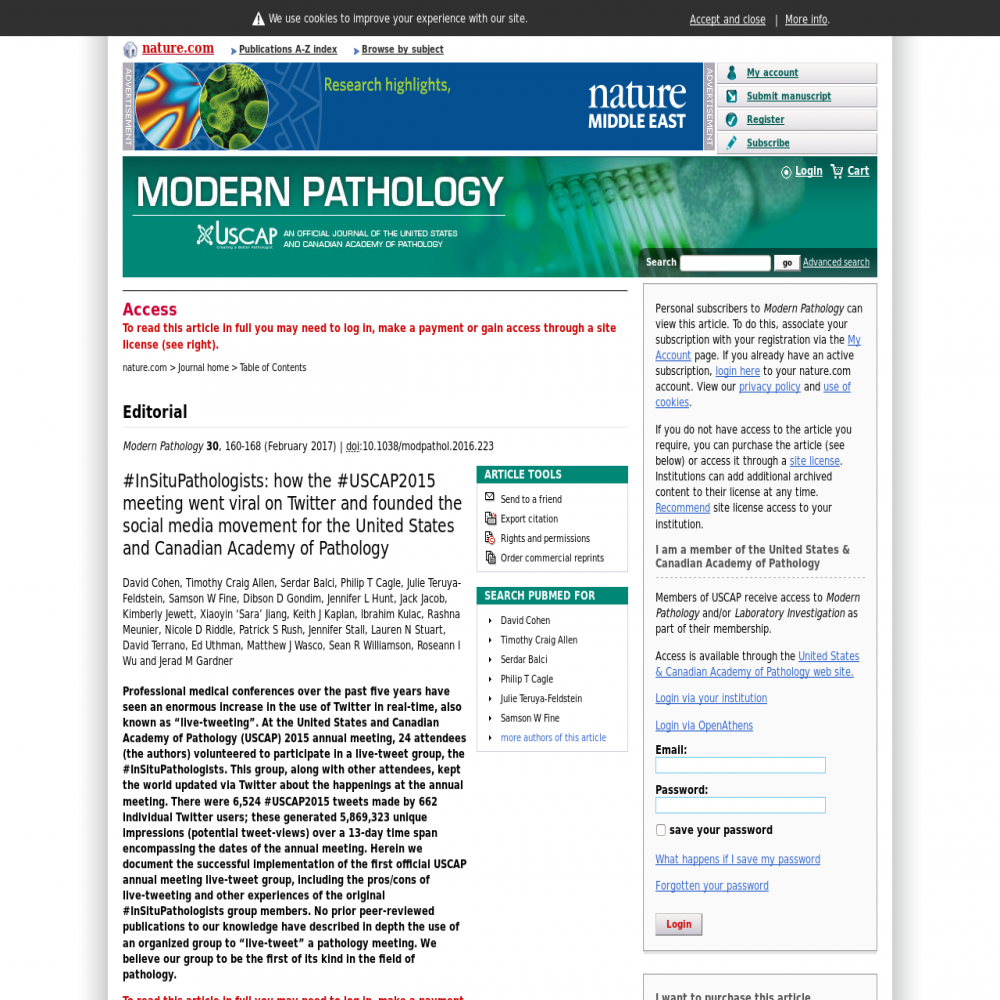Abstract
Professional medical conferences over the past five years have seen an enormous increase in the use of Twitter in real-time, also known as "live-tweeting". At the United States and Canadian Academy of Pathology (USCAP) 2015 annual meeting, 24 attendees (the authors) volunteered to participate in a live-tweet group, the #InSituPathologists. This group, along with other attendees, kept the world updated via Twitter about the happenings at the annual meeting. There were 6,524 #USCAP2015 tweets made by 662 individual Twitter users; these generated 5,869,323 unique impressions (potential tweet-views) over a 13-day time span encompassing the dates of the annual meeting. Herein we document the successful implementation of the first official USCAP annual meeting live-tweet group, including the pros/cons of live-tweeting and other experiences of the original #InSituPathologists group members. No prior peer-reviewed publications to our knowledge have described in depth the use of an organized group to "live-tweet" a pathology meeting. We believe our group to be the first of its kind in the field of pathology.Modern Pathology advance online publication, 13 January 2017; doi:10.1038/modpathol.2016.223.
Altmetric
The Altmetric Attention Score is based on the attention a research article gets on the internet. Each coloured thread in the circle represents a different type of online attention and the number in the centre is the Altmetric Attention Score. The score is calculated based on two main sources of online attention: social media and mainstream news media.
Healthcare Social Media Research
See the full list of healthcare social media research articles with data from or reference to Symplur.
#hcsmR is a collaboration between Stanford Medicine X and Symplur.


